Standard
In the analysis work, it often demanded to apply high-quality compound with the exact content being accurate in order to be compared as the detection control or used to calibrate the instrument, the compound is known as standard sample.
Standard refers to the standard substance used for measuring the potency of biological products. When the production department submits to a higher authority for approval of the quality standard of the biological product, they should also provide the standard sample (indicated in unit (μ)) used for measuring the potency of the tested product.
According to different application, the verification products can be divided into biological standard for the testing of biological products, endocrine drugs, antibiotics and other bioassay and chemical standards including:
1 chemical standards used for calibration of the instrument;
2 chemical reference standards used for calibration of the ultraviolet or infrared spectrum of the drugs;
3 control standards used for the purity test of drugs as well as the impurity control or as the control standards for content determination of the medicine.
In the page 67 of the appendix in the People's Republic of China Pharmacopoeia 1990 1st edition, we can find hundreds kinds of standards including bornyl ester acetate, eugenol and panaxadiol as well as 39 kinds of control medicine for the purify inspection of traditional Chinese medicine, impurity control or the content determination.
International standards
This refers to standard sample, with the potency units of the existing international standard sample potency units as baseline, undergoing further calibration of its potency units on the basis of a wide range of international cooperation. Its potency is expressed in 1U. For a certain product, for the establishment of the first international standard sample, the determination of its potency units should be consulted and decided by the Committee of Experts before the announcement. The international standard is a standard reference substance for worldwide preparation of national standards, so that the international standards can achieve unity.
Reagents and standards
All reagents in the food analysis laboratories should be clearly labeled to indicate the following: 1 name; 2 the date of preparation; 3 Signature from the people in charge; 4 if necessary, we need to add content such as safety and validity and so on.
Most food analysis should use standard sample as reference for qualitative and quantitative determination. The standard sample should be classified according to the following classification methods: 1 international standard; 2 national standards; 3 internal standard; 4 other standards.
Receptacle for reference standards should be clearly affixed to the label, to indicate the following: 1 name; 2 standard document number; 3 Opening times; 4 Validity; 5 Signature.
In addition, the laboratory should keep all the necessary specific files for all the necessary reference standards.
Capacity analysis standard solution should also be strictly managed. It should be clearly posted on all the standard solution containers with labels to indicate: 1 name; 2 concentration; 3 formulation date; 4 No of formulated procedures; 5 storage conditions; 6 validity; 7 Signature from people in charge.
- Chemical Name:Omegawax Column Test Mix
- CAS:
- MF:
- Chemical Name:ASTM D5307 Crude oil internal standard
- CAS:
- MF:
- Chemical Name:Window for Aldrich adjustable cell holder
- CAS:
- MF:
- Chemical Name:Replacement Viton O-rings for base Z506702
- CAS:
- MF:
- Chemical Name:Hellma absorption cuvettes, standard cells, ultra Micro
- CAS:
- MF:
- Chemical Name:Steel vial and ball pestle for analog Wig-L-Bug grinder/mixer
- CAS:
- MF:
- Structure:

- Chemical Name:Niobium Standard for AAS
- CAS:
- MF:Nb
- Chemical Name:Titanium (O, N)
- CAS:
- MF:
- Chemical Name:Chlorinated hydrocarbons on Tenax (CHC)
- CAS:
- MF:
- Chemical Name:Cotton seed GMO standard T304-40
- CAS:
- MF:
- Structure:
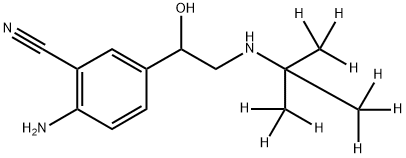
- Chemical Name:CiMbuterol-D9
- CAS:1246819-04-4
- MF:C13H19N3O
- Structure:

- Chemical Name:Triclabendazole-D3
- CAS:1353867-93-2
- MF:C14H9Cl3N2OS
- Structure:
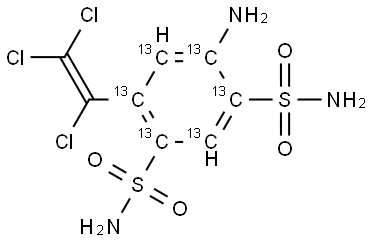
- Chemical Name:Clorsulon-13C6
- CAS:1325559-24-7
- MF:C8H8Cl3N3O4S2
- Structure:
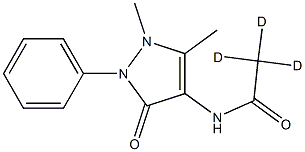
- Chemical Name:4-AcetaMido-D3-antipyrine
- CAS:342821-66-3
- MF:C13H12D3N3O2
- Structure:

- Chemical Name:Desoxycarbadox-D3
- CAS:1448350-02-4
- MF:C11H10N4O2
- Structure:
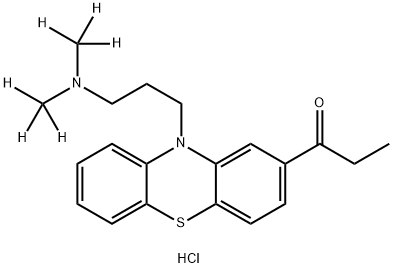
- Chemical Name:PropionylproMazine-D6 hydrochloride
- CAS:1262770-67-1
- MF:C20H25ClN2OS
- Structure:

- Chemical Name:2226-96-2
- CAS:2226-96-2
- MF:
- Chemical Name:HUMAN ALFAFOETOPROTEIN
- CAS:
- MF:
- Chemical Name:Compound feed (aflatoxin B1, blank)
- CAS:
- MF:
- Chemical Name:CARB Carbonyl-DNPH Mix 1
- CAS:
- MF:
- Chemical Name:Glass spectrophotometer cuvettes
- CAS:
- MF:
- Chemical Name:1,3-Butadiene in nitrogen
- CAS:
- MF:
- Structure:

- Chemical Name:Copper Standard for ICP
- CAS:
- MF:Cu
- Chemical Name:Brass control valve with threaded outlet
- CAS:
- MF:
- Chemical Name:EPA HC Purgeable C
- CAS:
- MF:
- Chemical Name:Benzene in air
- CAS:
- MF:
- Chemical Name:EPA 525,525.1 Internal Standard Mix
- CAS:
- MF:
- Chemical Name:Methane, Ethane, Ethylene, Acetylene, Propane, Propylene, Propyne, and n-Butane
- CAS:
- MF:
- Structure:

- Chemical Name:Nitrogen (99.99%)
- CAS:
- MF:N2
- Chemical Name:Bovine muscle (high residue of diethylstilboestrol)
- CAS:
- MF:
- Chemical Name:Haricots verts (major nutrients)
- CAS:
- MF:
- Chemical Name:EPA 625 Base Neutral 2
- CAS:
- MF:
- Chemical Name:Magnesium-24Mg solution
- CAS:
- MF:
- Chemical Name:Coal (F)
- CAS:
- MF:
- Structure:

- Chemical Name:Strontium Standard for ICP
- CAS:
- MF:Sr
- Structure:

- Chemical Name:Gallium Standard for AAS
- CAS:
- MF:Ga
- Chemical Name:EPA 8240B Calibration Standard Mix 4
- CAS:
- MF:
- Chemical Name:EPA 503.1 Volatiles Mix
- CAS:
- MF:
- Chemical Name:EPA 8260 Gases Mix 1 SS
- CAS:
- MF:
- Chemical Name:EPA 601 Purgeables Performance Mix
- CAS:
- MF:
- Chemical Name:EPA 8270 Acids Matrix Spiking Solution
- CAS:
- MF:
- Chemical Name:Fully 13C-labelled T-2 Toxin, U-[13C24] - T-2 Toxin
- CAS:
- MF:13C24H34O9
- Structure:
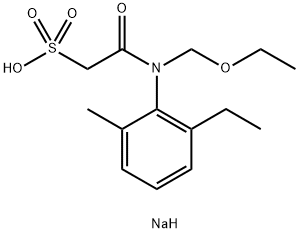
- Chemical Name:Acetochlor ethanesulfonic acid sodium salt, 2-[(Ethoxymethyl)(2-ethyl-6-methylphenyl) amino]-2-oxo-ethanesulfonic acid sodium salt
- CAS:947601-84-5
- MF:C14H22NNaO5S
- Structure:
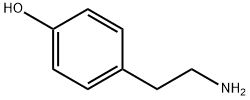
- Chemical Name:51-67-2
- CAS:51-67-2
- MF:
- Structure:

- Chemical Name:rac AMphetaMine Hydrochloride
- CAS:2706-50-5
- MF:C9H14ClN
- Structure:
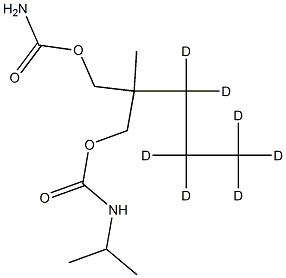
- Chemical Name:Carisoprodol-D7
- CAS:1218911-16-0
- MF:C12H17D7N2O4
- Chemical Name:AROCLOR MIX 2
- CAS:
- MF:
- Structure:

- Chemical Name:111-14-8
- CAS:111-14-8
- MF:
- Chemical Name:Megestrol Acetate IMpurity K
- CAS:
- MF:
- Chemical Name:MeloxicaM Related CoMpound D
- CAS:
- MF:
- Structure:
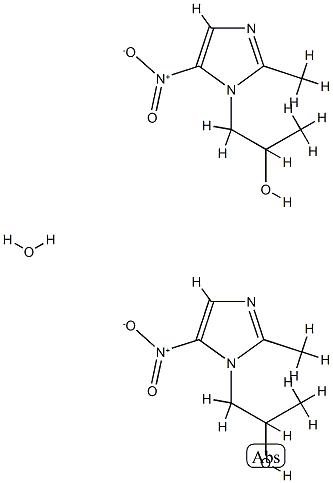
- Chemical Name:Secnidazole heMihydrate
- CAS:227622-73-3
- MF:C14H24N6O7
- Chemical Name:Abacavir StereoisoMers Mixture
- CAS:
- MF:
- Chemical Name:Chloroquine Related CoMpound G
- CAS:
- MF:
- Chemical Name:Medroxyprogesterone Acetate Related CoMpound A
- CAS:
- MF:
- Structure:
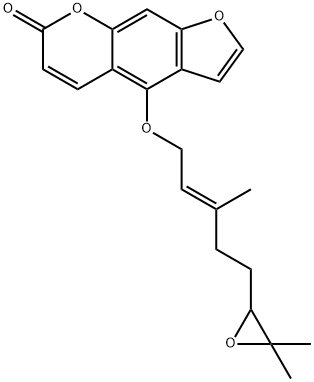
- Chemical Name:EPOXYBERGAMOTTIN
- CAS:206978-14-5
- MF:C21H22O5
- Chemical Name:ddNTP set
- CAS:
- MF:
- Structure:

- Chemical Name:Europium, AAS standard solution, Specpure, Eu 1000μg/ml
- CAS:
- MF:Eu
- Structure:

- Chemical Name:Gallium, AAS standard solution, Specpure, Ga 1000μg/ml
- CAS:
- MF:Ga
- Structure:

- Chemical Name:Indium, AAS standard solution, Specpure, In 1000μg/ml
- CAS:
- MF:In
- Structure:

- Chemical Name:Gadolinium, AAS standard solution, Specpure, Gd 1000μg/ml
- CAS:
- MF:Gd
- Structure:

- Chemical Name:Uranium, AAS standard solution, Specpure, U 1000μg/ml
- CAS:
- MF:U
- Chemical Name:Round crystal window
- CAS:
- MF:
- Chemical Name:EPA 502/524.2 VOC Mix
- CAS:
- MF:
- Chemical Name:Butter fat (pure & adulterated fat)
- CAS:
- MF:
- Chemical Name:EPA 551B Halogenated Volatiles Mix
- CAS:
- MF:
- Structure:
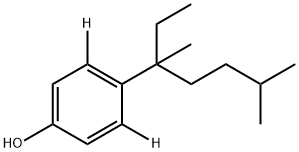
- Chemical Name:3,6,3-Nonylphenol-d2, 363-NP-D2, 4-(1-Ethyl-1,4-dimethylpentyl)phenol-3,5-d2
- CAS:1173020-19-3
- MF:C15H24O
- Chemical Name:pH Indicator solution, universal pH 0-5
- CAS:
- MF:
- Chemical Name:JHAP-43 Mix
- CAS:
- MF:
- Structure:
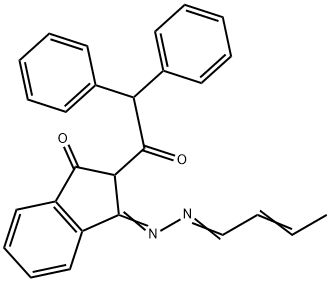
- Chemical Name:2-Diphenylacetyl-indan-1,3-dione-1-(2-butenylidene)hydrazone, 3-(2-Butenylidene-hydrazono)-2-diphenylacetyl-indan-1-one
- CAS:103480-19-9
- MF:C27H22N2O2
- Chemical Name:JP-8 Military Fuel solution
- CAS:
- MF:
- Chemical Name:Potassium sulfate fertilizer (elemental composition)
- CAS:
- MF:
- Structure:
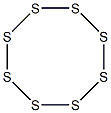
- Chemical Name:Sulfur Standard for AAS
- CAS:
- MF:S8
- Chemical Name:GMO Standard ERM-BF424
- CAS:
- MF:
- Chemical Name:Rice flour (trace elements)
- CAS:
- MF:
- Chemical Name:Reversed Phase Test Mix 1
- CAS:
- MF:
- Structure:

- Chemical Name:Cesium Standard for ICP
- CAS:
- MF:Cs
- Chemical Name:EPA 8270C Base-Neutrals Mix
- CAS:
- MF:
- Chemical Name:Estuarine sediment (trace elements)
- CAS:
- MF:
- Chemical Name:Microcystin RR-YR-LR solution
- CAS:
- MF:
- Chemical Name:EPA Haloethers Mix
- CAS:
- MF:
- Chemical Name:Disposable UV-grade methacrylate cuvettes
- CAS:
- MF:
- Chemical Name:8260 Surrogate Spike Mix
- CAS:
- MF:
- Chemical Name:Lichen (trace elements)
- CAS:
- MF:
- Chemical Name:Mercury 202Hg (certified for isotope abundance ratio)
- CAS:
- MF:
- Structure:

- Chemical Name:Rhodium Standard for AAS
- CAS:
- MF:Rh
- Structure:

- Chemical Name:Cadmium ICP/DCP standard solution
- CAS:
- MF:Cd
- Chemical Name:Rare Earth Polishing compound for crystal-polishing kit
- CAS:
- MF:
- Chemical Name:PCB Kit
- CAS:
- MF:
- Chemical Name:EPA Purgeable Internal Standard Mix
- CAS:
- MF:
- Structure:

- Chemical Name:Selenium Standard for ICP
- CAS:
- MF:Se2
- Chemical Name:Bovine eye (Clenbuterol blank)
- CAS:
- MF:
- Chemical Name:DCMA PCB Mixture
- CAS:
- MF:
- Structure:
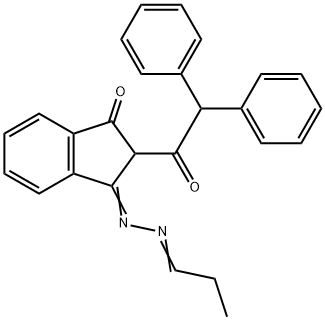
- Chemical Name:2-Diphenylacetyl-3-(propylidene-hydrazono)indan-1-one, 2-Diphenylacetyl-indan-1,3-dione-1-propylidenehydrazone
- CAS:1119449-20-5
- MF:C26H22N2O2
- Chemical Name:Human hair (trace elements)
- CAS:
- MF:
- Chemical Name:EPA 552 Halogenated Acetic Acids Mix
- CAS:
- MF:
- Chemical Name:LC-CN/LC-PCN Test Mix
- CAS:
- MF:
- Chemical Name:EPA 8270 Surrogate Standards Mix 1
- CAS:
- MF:
- Chemical Name:EPA 505/525 Update Pesticides Mix A
- CAS:
- MF:
- Chemical Name:PVOC Mix
- CAS:
- MF:
- Chemical Name:Chlorine in nitrogen
- CAS:
- MF: